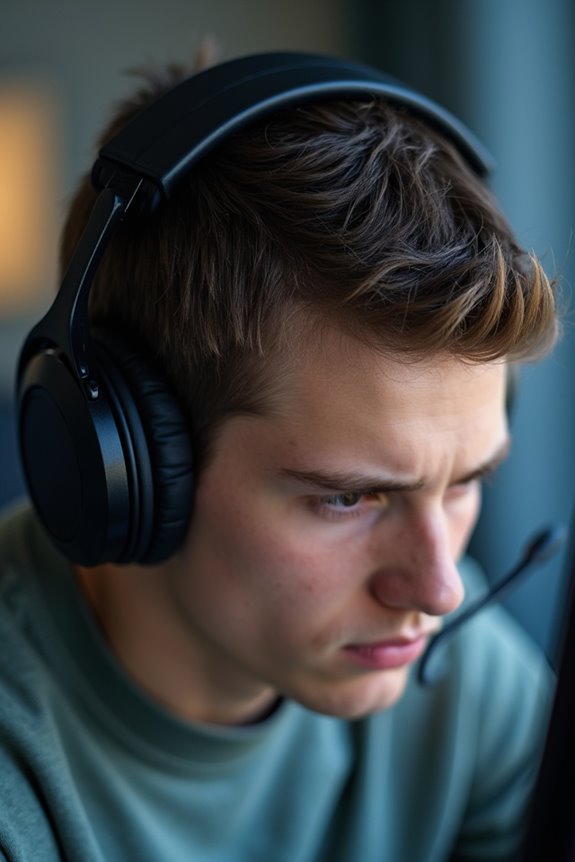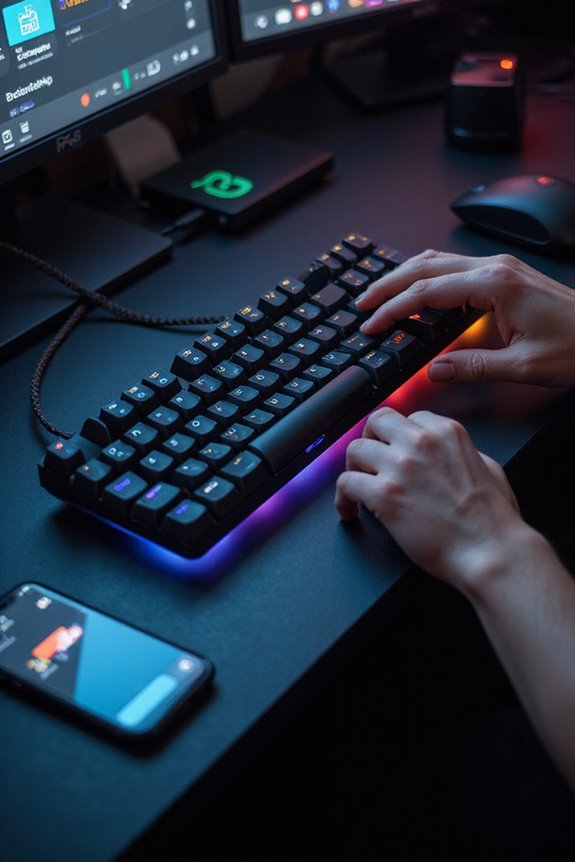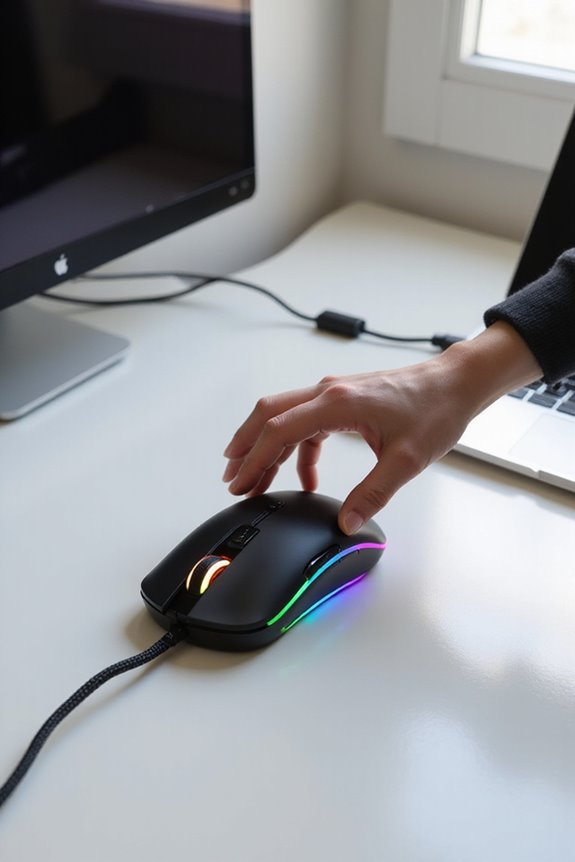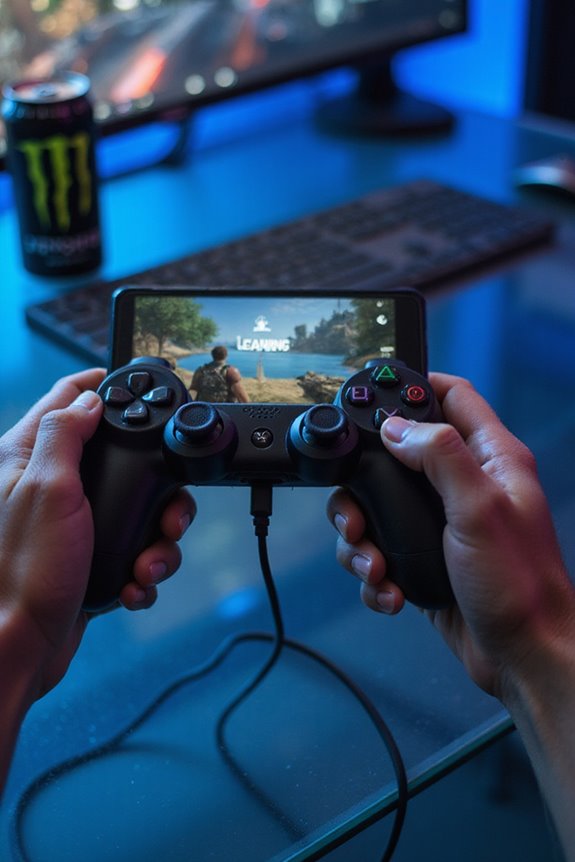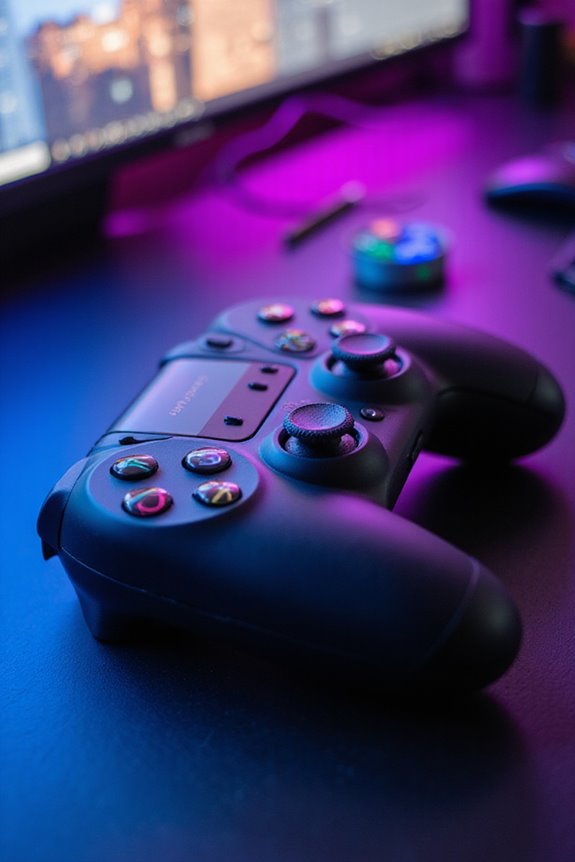Wearing a gaming headset can potentially lead to hair loss, especially if it’s tight-fitting. The pressure can irritate the scalp, and prolonged use may create tension on hair follicles. While there’s no definitive research linking headsets directly to hair loss, styles like tight ponytails can cause traction alopecia, which is concerning. Using headsets with padded headbands and taking breaks really helps reduce pressure. Stick around to explore more actionable tips for maintaining healthy hair while gaming!
Key Takeaways
- Tight-fitting gaming headsets may cause friction and pressure on the scalp, potentially leading to hair breakage or traction alopecia over time.
- No definitive research links gaming headsets directly to significant hair loss, focusing instead on genetics and medical conditions.
- Symptoms of traction alopecia can include itching and redness, often resulting from prolonged tension on hair from tight headsets.
- Regular breaks from wearing headsets and loosening their fit can alleviate discomfort and reduce the risk of scalp irritation.
- Maintaining hair hygiene by cleaning headsets regularly helps prevent sweat and dirt buildup that may irritate the scalp.
Understanding Hair Loss: Definitions and Causes
Hair loss, or alopecia, is a common concern that many people face at some point in their lives. It can be overwhelming to think about, especially since it affects about half of men and a quarter of women by age 50. The causes vary widely, from genetics and hormonal changes to stress and autoimmune conditions. I’ve learned there are different types, like male-pattern baldness and alopecia areata, each with unique symptoms such as thinning hair or sudden bald spots. While it’s easy to get lost in the technical terms, understanding these basics can make it less intimidating. Taking a moment to recognize what contributes to hair loss can empower you to seek solutions that work for you, whether it’s lifestyle changes or treatments.
The Role of Headphones in Hair Health
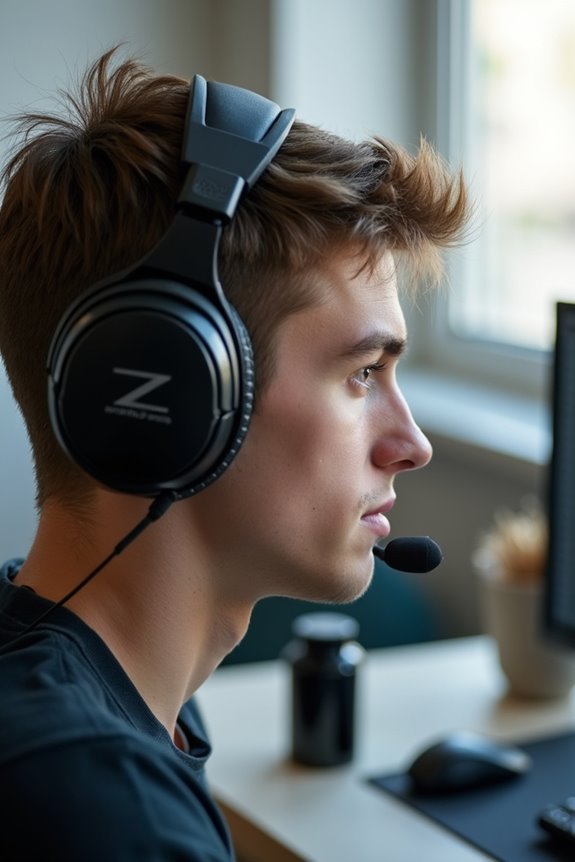
When it comes to maintaining healthy hair, the impact of headphones might not be the first thing that comes to mind. However, those tight-fitting over-ear models can cause friction on your scalp, potentially damaging your hair, especially if it’s dry or brittle. While there’s no direct evidence linking headphones to hair loss, the pressure they exert could irritate your scalp.
The materials and weight distribution of headphones matter too; hard plastics can lead to discomfort, and if they’re snug, they might flatten your hair. I’ve found that loosening the fit and taking breaks can help mitigate any discomfort. So, while headphones aren’t a hair loss culprit, keeping your hair hydrated and your headphones loose can go a long way in maintaining hair health.
Examining Traction Alopecia
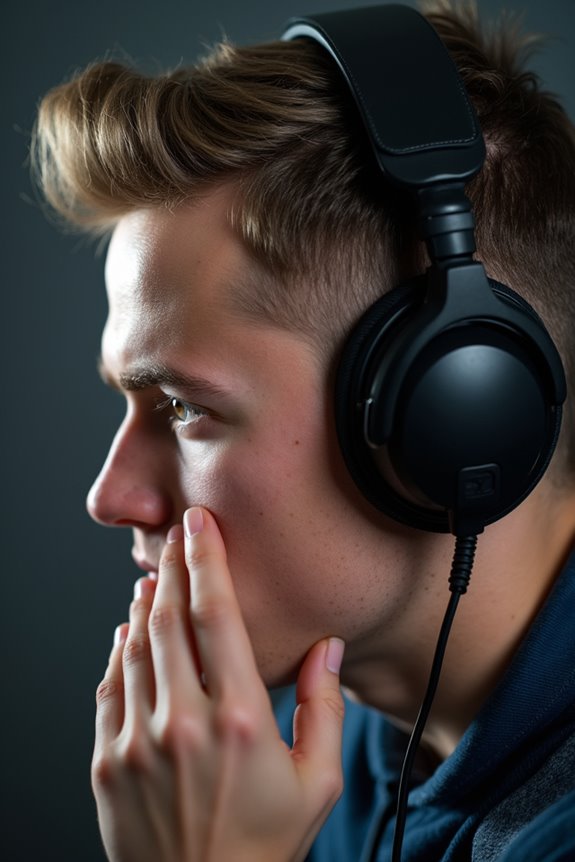
Although you might not think about it, traction alopecia can sneak up on you, especially if you’re often wearing tight hairstyles or accessories. This type of hair loss occurs due to prolonged tension on the hair, often from styles like tight ponytails or braids. I’ve noticed that early intervention is vital—if you stop the tension in time, you can often reverse the damage. However, continuing these practices can lead to permanent hair loss and scarring. Symptoms can include itching, redness, and even small pimples on the scalp. So, if you’ve been feeling your hairstyle’s a bit too tight, maybe it’s time to loosen things up. Your hair will thank you, and you’ll avoid those pesky bumps!
Pressure and Irritation From Headsets
Gaming headsets can be a double-edged sword when it comes to comfort and hair health. I’ve noticed that prolonged use can create friction and tension on my scalp, leading to irritation. Those tight headbands? They can exert constant pressure, causing redness and even pimple-like bumps. If you’ve got a hard plastic headset, it might feel great in the moment, but over time, it can be particularly irritating. Extended gaming sessions only increase the risk of hair loss. I’ve found that adjustable headbands and cushioned materials really help, distributing pressure more evenly. Regular breaks are essential, too! If you’re like me, switching to earbuds occasionally can save your scalp the hassle while still letting you enjoy your gaming experience. Additionally, using headsets with customizable RGB lighting and interchangeable ear cushions can enhance both comfort and gaming aesthetics.
Current Research on Headphones and Hair Loss
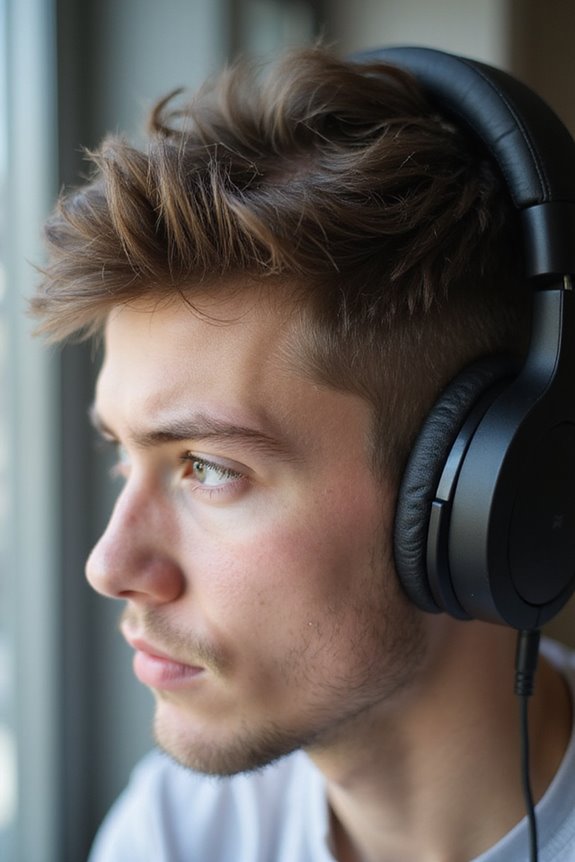
While I haven’t come across any studies that definitively link headphones to significant hair loss, the conversation around this topic is definitely worth exploring. Generally, most research focuses on genetics and medical conditions, not headphones. That said, tight-fitting models can create friction and tension, which might lead to hair breakage or even traction alopecia, much like a tight ponytail.
Prolonged use can trap sweat and dirt, potentially irritating the scalp. So, it’s wise to choose looser-fitting options. Regular breaks from wearing headphones can help minimize pressure on your hair. I’ve found that being mindful of hygiene and gently handling my headphones makes a difference. Monitoring hair health is essential, so don’t hesitate to consult a pro if concerns arise!
Insights From Dermatologists
When it comes to hair health, dermatologists generally emphasize the importance of understanding the factors that can contribute to hair loss. They mostly agree that casual or moderate use of headphones isn’t likely to cause permanent hair loss. However, I learned that traction alopecia can occur from constant tension on hair follicles, leading to breakage and thinning. The risk isn’t so much from the headphones themselves but rather the pressure they exert on your scalp. If you do notice hair loss, reducing that pressure might reverse any damage. It’s also essential to have a comfortable fit and prioritize regular hair care. So, if your headset feels tight, consider switching it out for something more forgiving. Your hair will thank you!
Gaming Headset Design and User Experience
Choosing the right headset can greatly enhance your gaming experience, especially when you consider factors like design and user comfort. For instance, I love how many headsets come with memory foam ear cushions, making those long sessions more bearable. The closed-back designs offer fantastic noise isolation, allowing me to focus on the game without distractions.
With features like 7.1 surround sound and advanced microphones, communication with teammates becomes seamless. Plus, lightweight materials like aluminum guarantee they’re durable without feeling cumbersome. I appreciate the detachable cables for versatility, too—wired or wireless, it’s my choice. But hey, remember that comfort varies, so finding the right fit is key. After all, nothing beats gaming in style and comfort!
The SteelSeries Arctis Nova Pro Wireless Gaming Headset, for example, offers dual connectivity and active noise cancellation, enhancing both audio immersion and flexibility for gamers.
Preventive Measures for Maintaining Hair Health
Finding the right balance between gaming and hair health is something I’ve started to prioritize, especially since headsets can put a lot of pressure on our scalps. I’ve learned to wear my headset loosely, which helps minimize pressure on my hair follicles. Taking regular breaks is another simple yet effective way to give my scalp a breather.
I’ve also switched to headsets with soft, padded headbands, which distribute pressure evenly. Cleaning my headset regularly prevents sweat and dirt from building up, making it more comfortable. When I want to switch it up, I’ll use earphones instead. By treating my hair gently when removing my headset and keeping my scalp hydrated, I feel I’m doing my part to maintain healthy locks.
Future Directions for Research on Hair Loss and Headset Use
As I plunge into the future directions for research on hair loss and headset use, it’s clear that we need to explore various aspects of this relationship more deeply. Investigating ergonomic innovations in headset design could be key; lightweight materials and pressure distribution features might greatly reduce scalp strain. We should also consider the psychological factors tied to gaming stress, as elevated cortisol levels may impact hair health indirectly. Plus, understanding demographics, like age and gender differences, could provide essential insights into hair loss patterns. Ultimately, I believe focused studies can help us create not just better headsets, but also promote healthier gaming habits while keeping our hair intact. Let’s keep the conversation going!
Frequently Asked Questions
Can Hair Loss From Headsets Be Reversed?
Isn’t it frustrating when something we love might lead to hair loss? But yes, I’ve learned that with early intervention and care, reversing that damage is possible. Just take breaks and treat your scalp gently.
Are Certain Hair Types More Susceptible to Headset-Related Damage?
I’ve noticed certain hair types, especially finer or more fragile ones, seem more prone to headset-related damage. If you’ve got thinning hair, it’s wise to be extra gentle and take breaks often.
How Often Should I Clean My Gaming Headset?
I clean my gaming headset after every 7 to 10 uses. It keeps things fresh and maintains sound quality. Trust me, regular cleaning really makes a difference in how it performs and feels.
Does Wearing a Headset Affect Hair Growth?
Wearing a headset can feel like wearing a snug cap—comforting yet limiting. I’ve noticed that prolonged use might irritate my scalp, but overall, it hasn’t greatly affected my hair growth. It’s all about balance, really.
What Hairstyles Are Best When Using Headsets Frequently?
When I wear headsets often, I find loose buns or braids work best. They keep my hair secure without pulling too tight, plus they’re comfy. I also love using soft hair products to keep things smooth.

